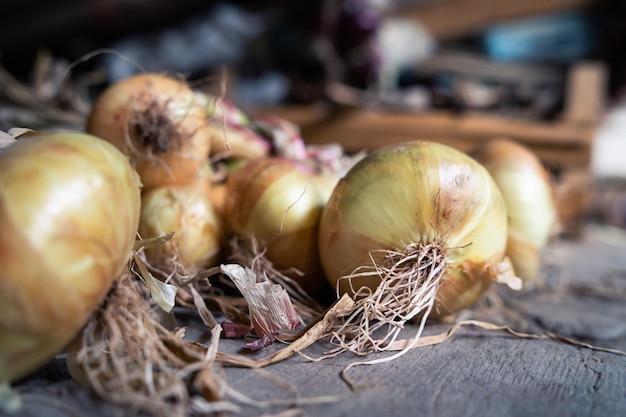The Ultimate Guide to Onions & Garlic: Harvesting Tips for the Home Gardener
Onions and garlic are more than just kitchen staples; they’re the heart of any flavorful dish. But did you know that the secret to their taste starts with how you grow and harvest them? Whether you’re a seasoned gardener or just starting out, understanding the best harvesting onions and garlic harvesting techniques can make all the difference. This ultimate guide to onions and garlic will walk you through the ins and outs of growing garlic and perfect onion storage tips. Let’s dig into the world of onion and garlic preservation, ensuring your homegrown produce lasts and tastes amazing!## Harvesting Onions and Garlic
Knowing when and how to harvest your onions and garlic is crucial for getting the best flavor and longest storage life. Let’s dive into the best practices for harvesting these aromatic vegetables.
Best Time to Harvest
The timing of your harvest can make or break your onion and garlic crop. For onions, look for the tops to begin falling over and yellowing. This usually happens in late summer or early fall, depending on when you planted.
For garlic, the best time to harvest is when the lower leaves start to brown, but the top leaves are still green. This typically occurs in mid to late summer. Check out this helpful video for visual cues.
Don’t wait too long to harvest, as overripe bulbs won’t store well. If you’re unsure, gently dig around a few plants to check the size and firmness of the bulbs.
Tools You’ll Need
Having the right tools on hand makes harvesting onions and garlic a breeze. Here’s what you’ll need:
-
Garden fork or spade for loosening the soil
-
Pruning shears for cutting stems
-
Harvest basket or bucket
-
Gloves to protect your hands
For larger harvests, you might want to invest in a digging fork, which can make unearthing multiple plants easier. Remember to clean your tools before and after use to prevent the spread of diseases.
Always handle your harvest gently to avoid bruising or damaging the bulbs. This care will pay off in better storage life and flavor.
Storing Your Harvest
Proper storage is key to enjoying your onions and garlic long after the growing season has ended. Let’s explore some effective storage methods for these kitchen staples.
Onion Storage Tips
Storing onions correctly can help them last for months. The key is to keep them cool, dry, and well-ventilated. This guide offers great tips for storing garden onions.
Start by curing your onions. Spread them out in a single layer in a warm, dry place for about two weeks. This allows the outer skins to dry and tighten around the bulb.
Once cured, store onions in mesh bags, braids, or open baskets. Keep them in a cool (32-40°F), dark place with good air circulation. A basement or garage can work well.
Avoid storing onions with potatoes, as they’ll cause each other to spoil faster. Check your stored onions regularly and remove any that show signs of softening or mold.
Storing Garlic Properly
Garlic storage is similar to onions, but with a few key differences. After harvesting, cure your garlic by hanging it in bundles or laying it out in a single layer in a warm, dry, well-ventilated area for 2-3 weeks.
Once cured, trim the roots and cut the stalks about an inch above the bulb. Store whole bulbs in mesh bags or open baskets in a cool (60-65°F), dry place away from direct sunlight.
For long-term storage, you can braid soft-neck garlic varieties. This not only looks attractive but also allows for easy access. Learn more about garlic storage techniques here.
Preservation Techniques

Beyond basic storage, there are several ways to preserve your onion and garlic harvest for extended use. Let’s explore some popular methods.
Drying and Curing Methods
Drying and curing are essential steps in preserving onions and garlic. These processes help remove excess moisture, preventing rot and extending shelf life.
For onions, lay them out in a single layer in a warm, dry area with good air circulation. Allow them to cure for 2-3 weeks until the necks are tight and the outer skins are dry and crispy.
Garlic requires a similar process. Hang bundles in a well-ventilated area or lay out individual bulbs. Cure for 2-4 weeks until the wrappers are papery and the roots are dry.
This podcast episode offers in-depth insights into curing techniques.
Long-term Storage Solutions
For truly long-term storage, consider these preservation methods:
-
Freezing: Chop onions or garlic and freeze in airtight containers or freezer bags.
-
Dehydrating: Slice thinly and use a food dehydrator or low-temperature oven.
-
Pickling: Preserve in vinegar for a tangy condiment.
-
Powder: Dehydrate and grind into a fine powder for seasoning.
Each method has its pros and cons. Freezing is quick but may alter texture. Dehydrating takes time but results in compact, long-lasting produce. Pickling adds flavor but changes the original taste. Powdering is versatile but requires extra equipment.
Choose the method that best suits your needs and kitchen setup. Experiment with small batches to find your preferred preservation technique.


